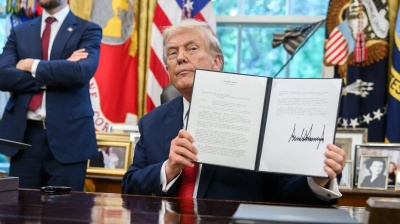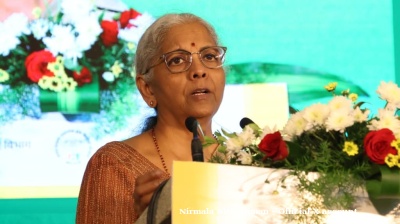In recent years, the PRC has escalated both maritime and aerial incursions into Taiwan's territory, including detaining a Taiwanese fishing boat, conducting patrols that crossed the Taiwan Strait's median line, and increasing harassment around Kinmen.
More recently, following Taiwan’s National Day on October 10, Chinese air and naval forces surrounded Taiwan in Beijing’s most aggressive show of force to date. These actions build on a surge in air sorties violating Taiwan’s Air Defence Identification Zone (ADIZ), which rose from 972 in 2021 to 3,119 in 2022, and continued climbing through 2024.
Beijing has further intensified its wider efforts at military intimidation by using drones, balloons, and civilian ships to collect intelligence and conduct gray-zone harassment. Additionally, China has disguised military activities with maritime survey ships while frequently deploying coast guard and naval vessels to exhaust Taiwan’s defences.
In addition to Taiwan, China is threatening Japan and the Philippines with a three-pronged maritime strategy, focusing on the Senkaku Islands, Scarborough Shoal, and Taiwan’s Kinmen, all of which China claims. These locations are part of the 'First Island Chain,' which extends to Okinawa in Japan, and serves as China's perceived first line of defence.
Japan has reported a steady increase in Chinese coast guard vessels entering its territorial waters near the Senkaku Islands, with a record 1,287 vessels spotted in 2023 over 352 days, prompting Tokyo to boost its patrols. The Philippines experienced at least four similar incidents in the first half of this year, following 10 in 2023. And, in recent weeks, two clashes occurred between Chinese and Philippine ships off Palawan Island.
China's increased aggression has prompted Taiwan, Japan, and the Philippines to boost their defence spending and strengthen defence collaboration with the United States. Japan also signed a defence agreement with the Philippines, and recently, six nations participated in joint naval operations aimed at deterring China. In response, China launched an intercontinental ballistic missile (ICBM) into the Pacific Ocean.
Since coming to power in 2012, Xi Jinping has vowed to annex Taiwan and secure all territories claimed by China, despite international court rulings against these claims. China’s pursuit of these goals is expected to become more aggressive as 2027 approaches, marking the centennial of the People’s Liberation Army (PLA) and a key milestone in Xi's PLA modernization efforts. By that date, Xi aims to have the PLA Navy capable of challenging the US.
Although he has not officially set a date, many believe he will invade Taiwan in that year.
The People's Liberation Army (PLA) has undergone significant modernisation since the 1980s, with reforms initiated by Deng Xiaoping and accelerated under Xi Jinping. Xi’s focus on creating a “world-class” military has involved major reforms in organisational structure, command, and equipment upgrades across four key services: the Army, Navy, Air Force, and Rocket Force, as well as four specialised arms: the Aerospace Force, Cyberspace Force, and the newly established Information Support Force.
As part of this modernisation, the PLA has reorganised its military regions into five theatre commands and strengthened its combined-arms brigades, which include artillery, armour, and air defence capabilities. China has also focused on upgrading its military hardware, deploying advanced tanks like the Type 15 to high-altitude regions and introducing new weapons systems such as self-propelled artillery and anti-aircraft guns.
The PLA is further incorporating AI and unmanned vehicles into its operations, enhancing its ability to conduct amphibious assaults and electronic warfare. Additionally, the PRC has developed and integrated satellite constellations and emerging technologies, such as quantum radar and neurostrike weapons.
China's navy is now the world’s largest, with more ships than the US., boasting over 370 combat vessels, a number projected to grow to 435 by 2030. This rapid expansion is partly due to China's shipbuilding capacity, which surpasses that of the US. The naval modernisation includes acquiring advanced ships, aircraft, and weapons, improving personnel training and logistics, and enhancing command and control systems. Although the PLA Navy has no combat experience, its growing capabilities represent an increasing threat in the western Pacific.
The People’s Liberation Army Air Force (PLAAF) is now the largest aviation force in the Indo-Pacific and the third-largest globally, with over 3,150 aircraft, including advanced fighters like the J-20 and H-6 bombers. Modernisation efforts in this sphere have focused on enhancing air defence, integrating drones, and upgrading engines and missile capabilities. The PLAAF has also taken on additional roles, such as maritime strike missions, and continues to prioritise stealth, electronic warfare, and unmanned aerial systems to bolster its strategic capabilities across the region.
The modernisation of the People’s Liberation Army Rocket Force (PLARF) meanwhile has focused on enhancing both nuclear and conventional ballistic missile capabilities, expanding the number of brigades, and developing advanced missile systems like the DF-17 with hypersonic glide vehicles.
China’s nuclear arsenal is expected to reach 1,500 warheads by 2035, with advancements in missile technology aimed at penetrating defence systems. The PLARF is also investing in satellite systems for precision-strike capabilities and ensuring the survivability of its arsenal.
The Information Support Force (ISF) was launched in April 2024, to advance China’s capabilities in modern warfare by integrating network and information systems. Replacing the PLA’s former Strategic Support Force (SSF), the ISF is tasked with supporting cyber, electronic, and information warfare while coordinating with other PLA units. Its formation underscores China’s focus on information dominance, cognitive warfare, and AI-enhanced decision-making. The ISF plays a key role in President Xi Jinping’s goal of building an "informatised" military, positioning it as a strategic arm for future conflicts, particularly regarding Taiwan.
The PLA’s modernisation poses a growing threat to Taiwan and regional stability, with advancements in missile technology, stealth systems, and AI-based warfare. In response, the US and its allies are racing to enhance their military capabilities, focusing on both modernisation of their own forces, and the strengthening of strategic alliances.
A unified, coordinated defence effort is crucial to safeguarding Taiwan and countering China’s expanding military power in the Indo-Pacific.
News

Trump authorises CIA covert operations in Venezuela to topple Maduro
The White House has acknowledged granting the Central Intelligence Agency sweeping powers to conduct covert operations aimed at unseating President Nicolás Maduro, the NYT reported.

India’s finance minister to miss upcoming IMF and World Bank meetings
India’s Finance Minister Nirmala Sitharaman will not attend this week’s annual meetings of the International Monetary Fund and World Bank in Washington, as trade negotiations between New Delhi and Washington remain unresolved.

Young Ukrainians asylum seekers fleeing the war for Germany surges
The number of young Ukrainian fleeing the war and seeking asylum in Germany has surged, following Ukraine’s decision to partially lift its travel ban for men aged 18 to 22, according to figures from the German Interior Ministry.

US may double support for Argentina to $40bn conditional on policy reforms
Washington buys Argentine pesos and mulls creating a new private sector-led $20bn debt facility, which would bring total support to $40bn with the existing swap line, Treasury Secretary Bessent said.




